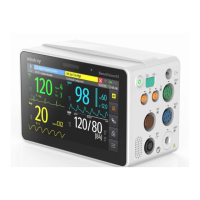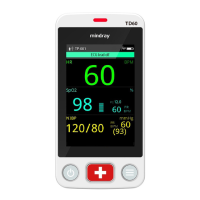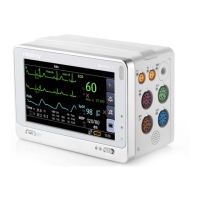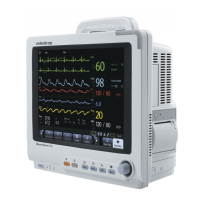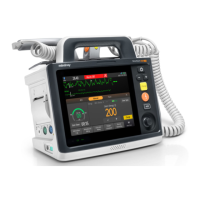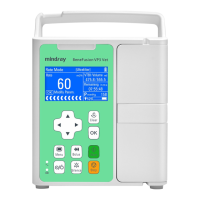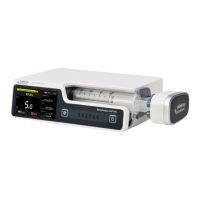11 - 24 BeneVision N Series Patient Monitor Operator’s Manual
11.9 QT/QTc Interval Monitoring
The QT interval is defined as the time between the beginning of the Q-wave and the end of the T-wave. It
measures the total duration of ventricular depolarization (QRS duration) and repolarization (ST-T). QT interval
monitoring can assist in the detection of long QT syndrome.
The QT interval has an inverse relationship to heart rate. Faster heart rates shorten the QT interval and slower
heart rates prolong the QT interval. Therefore, several formulas can be used to correct the QT interval for heart
rate. The heart rate corrected QT interval is abbreviated as QTc.
QT/QTc interval monitoring is intended for adult, pediatric, and neonatal patients.
11.9.1 QT/QTc Monitoring Limitations
Some conditions may make it difficult to achieve reliable QT/QTc monitoring, for example:
■ R-wave amplitudes are too low
■ The presence of frequent ventricular ectopic beats
■ Unstable RR intervals
■ P-waves tending to encroach on the end of the previous T-wave at high heart rates
■ The T-wave is very flat or T-wave are not well defined
■ The end of the T-wave is difficult to delineate because of the presence of U-waves
■ QTc measurements are not stable
■ In the presence of noise, asystole, ventricular fibrillation, atrial fibrillation, and ECG lead off
For these cases you should select a lead with good T-wave amplitude and no visible flutter activity, and without
a predominant U-wave or P-wave.
Some conditions such as left or right bundle branch block or hypertrophy can lead to a widened QRS complex. If
a long QTc is observed you should verify it to ensure that it is not caused by QRS widening.
Because normal beats followed by ventricular beats are not included in the analysis, no QT measurement will be
generated in the presence of a bigeminy rhythm.
If the heart rate is extremely high (over 150bpm for adults and over 180bpm for pediatrics and neonates), QT will
not be measured. When the heart rate changes, it can take several minutes for the QT interval to stabilize. For
reliable QTc calculation it is important to avoid measurements when the heart rate is changing.
11.9.2 Enabling QT/QTc Monitoring
The QT monitoring function is disabled by default. Before you start QT monitoring, enable the QT function. To do
so, follow this procedure:
1. Select the QT numerics area, ECG numeric area, or waveform area to enter the ECG menu.
2. Select the QT tab→ select the Setup tab.
3. Switch on QT Analysis.
11.9.3 Displaying QT/QTc Numerics and Segments
To display QT/QTc numerics and Segments, follow this procedure:
1. Access Tile Layout by either of the following ways:
◆ Select the Screen Setup quick key → select the Tile Layout tab.
◆ Select Main Menu quick key → from the Display column select Tile Layout.
2. Click the parameter numeric area where you want to display the QT numerics, and then select ECG → QT/
QTc.
• QTc values are calculated based on the QT-HR, not the ECG HR. For more information, see
11.9.4Entering the QT View.
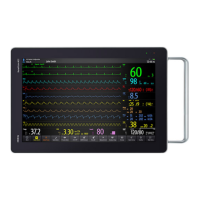
